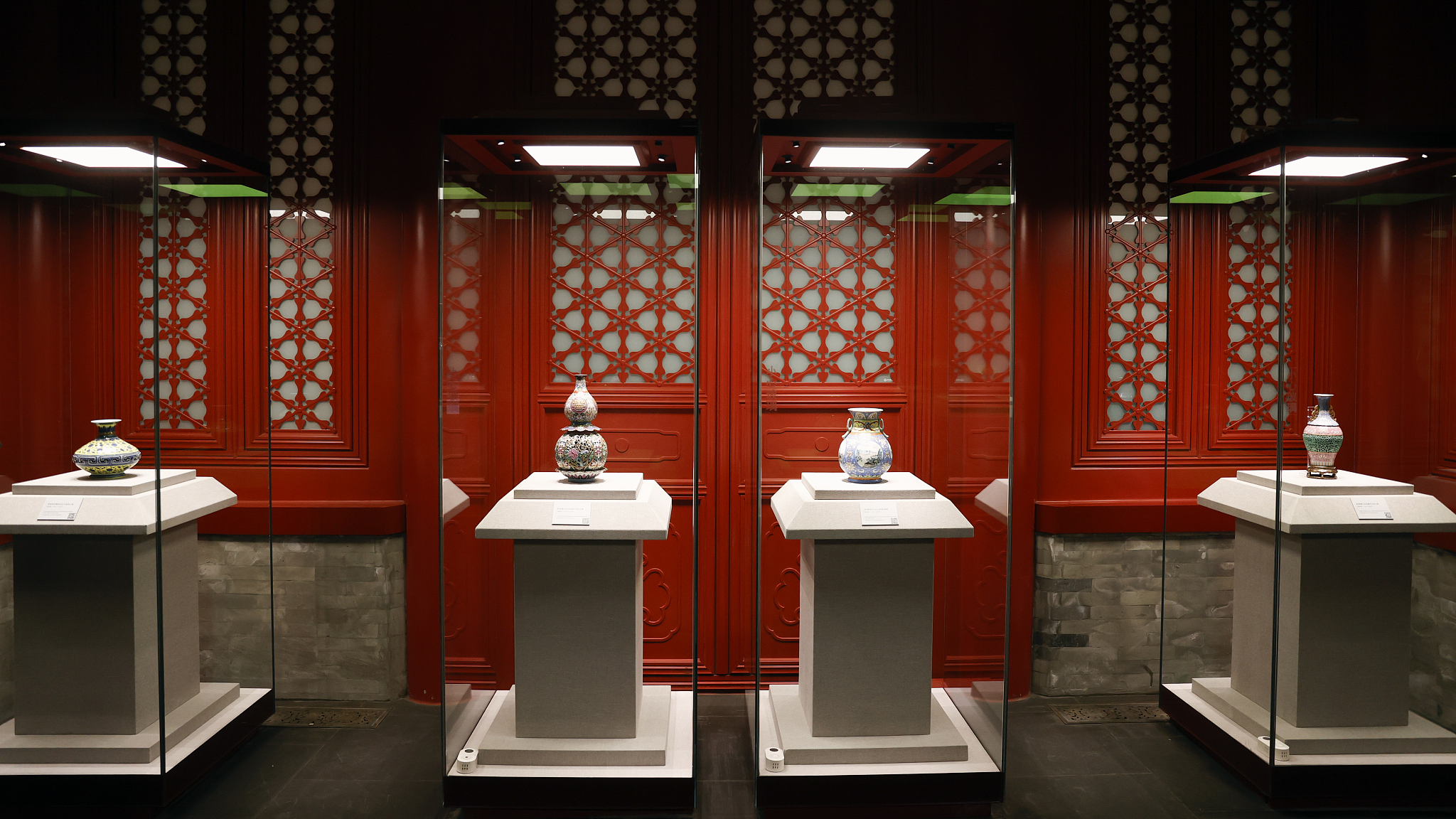
Ceramic artifacts displayed at the Palace Museum in Beijing, April 30, 2021. /CFP
Ceramic artifacts displayed at the Palace Museum in Beijing, April 30, 2021. /CFP
The Ceramics Gallery at Beijing's iconic Palace Museum, also known as the Forbidden City, reopened to the public on Saturday after two years of preparation. Over 1,000 artifacts are on display, showcasing the history of Chinese ceramics that spans some 8,000 years.
The gallery has been moved to the Hall of Martial Valor, or Wuying Dian in Chinese, offering visitors a larger exhibition space and a more interactive visiting experience.
As one of the most visited museums in the world, the Palace Museum used to be the imperial palace during the Ming (1368-1644) and Qing (1644-1911) dynasties. Today, it houses more than 1.86 million cultural relics, and around 370,000 of them are ceramics, mostly from the collections of royal families.
"The ceramics collections at the Palace Museum are not only huge, but also include a wide range of varieties, and many of them are clearly dated," Lyu Chenglong, chief curator of the exhibition at the gallery, said. "That enables us to design an exhibition in chronological order to unveil a continuous development of the artifacts."
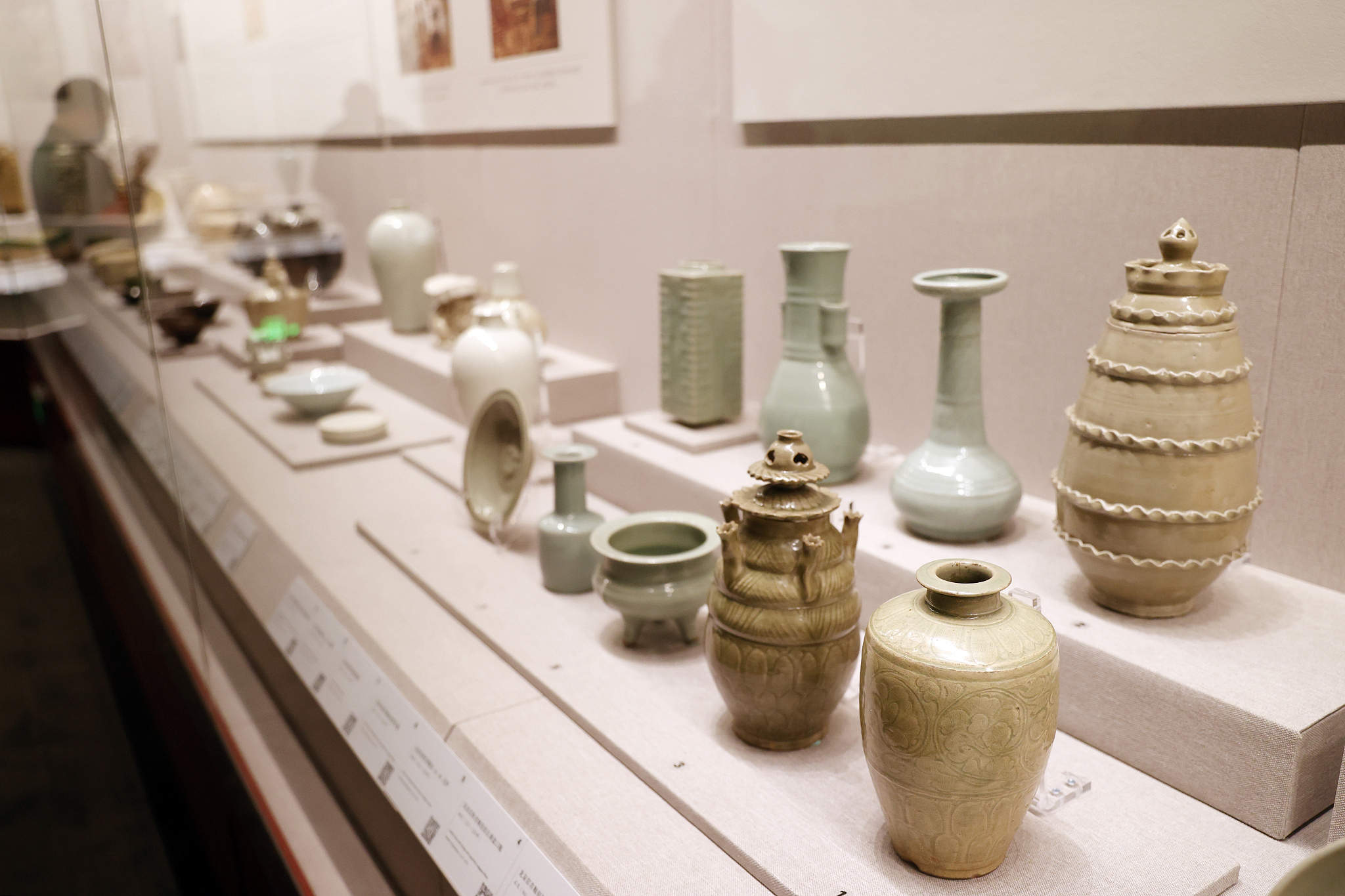
A collection of Chinese ceramics is on display at the Palace Museum's Wuying Dian, Beijing, April 30, 2021. /CFP
A collection of Chinese ceramics is on display at the Palace Museum's Wuying Dian, Beijing, April 30, 2021. /CFP
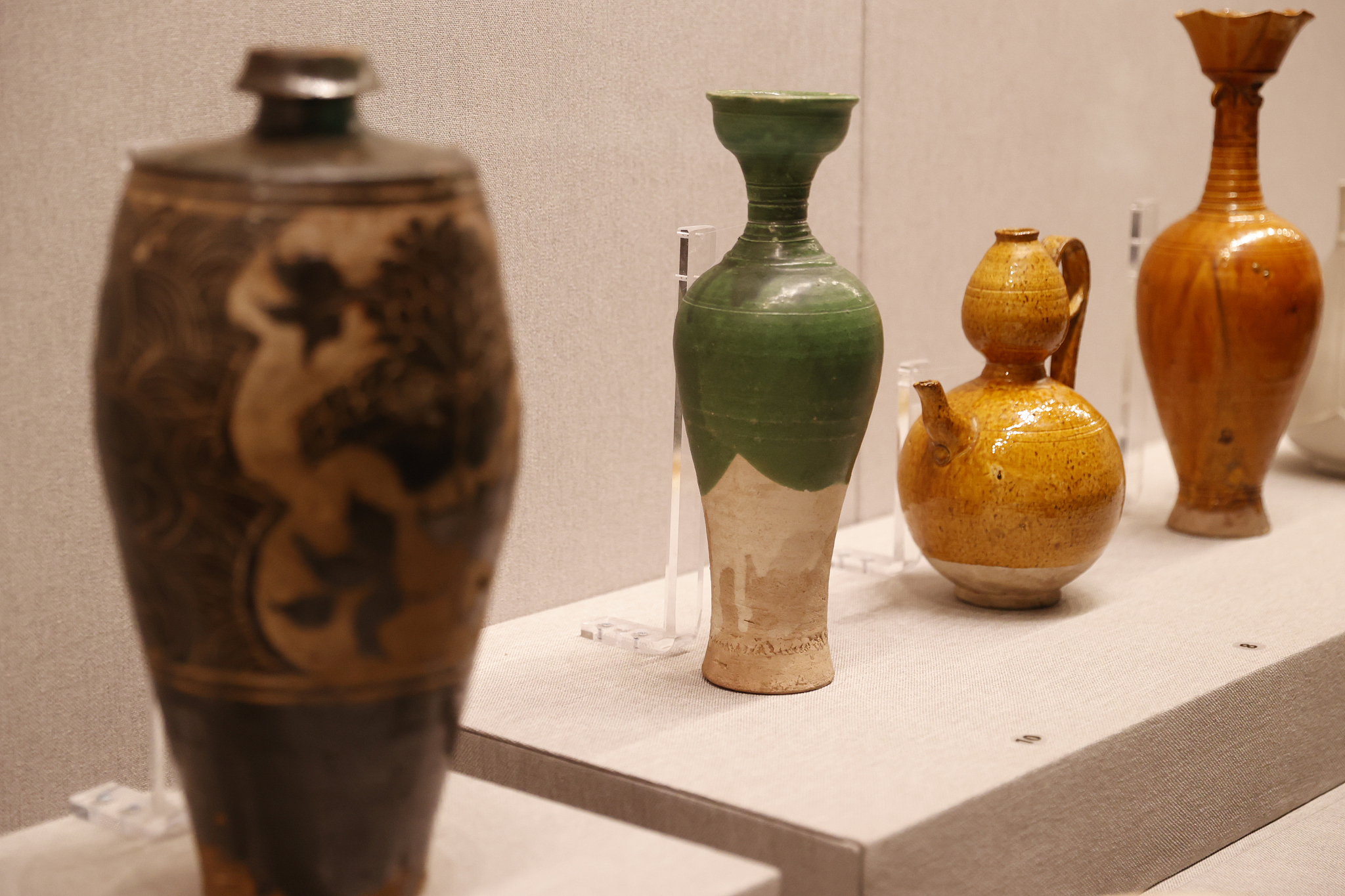
A collection of Chinese ceramics is on display at the Palace Museum's Wuying Dian, Beijing, April 30, 2021. /CFP
A collection of Chinese ceramics is on display at the Palace Museum's Wuying Dian, Beijing, April 30, 2021. /CFP
Among the major treasures are the artifacts produced by the top five porcelain kilns of the Song Dynasty (960-1279), often referred to as the zenith of ancient Chinese aesthetics.
The products of the imperial kiln of the Ming and Qing dynasties, which stood in Jingdezhen, east China's Jiangxi Province, and exclusively served the royals, is another landmark in the exhibition. Some of these artifacts are displayed based on their functions, such as ceramics for weddings, dining tables, sacrifice rituals and religious ceremonies.
Several exquisite openwork vases with revolving interiors made during the reign of Emperor Qianlong (1736-1796), an emperor known as a collector and an artwork enthusiast, have also been brought to the exhibition.

An openwork ceramic vase made during the reign of Emperor Qianlong (1736-1795) in the Qing Dynasty (1644-1911), April 30, 2021. /CFP
An openwork ceramic vase made during the reign of Emperor Qianlong (1736-1795) in the Qing Dynasty (1644-1911), April 30, 2021. /CFP
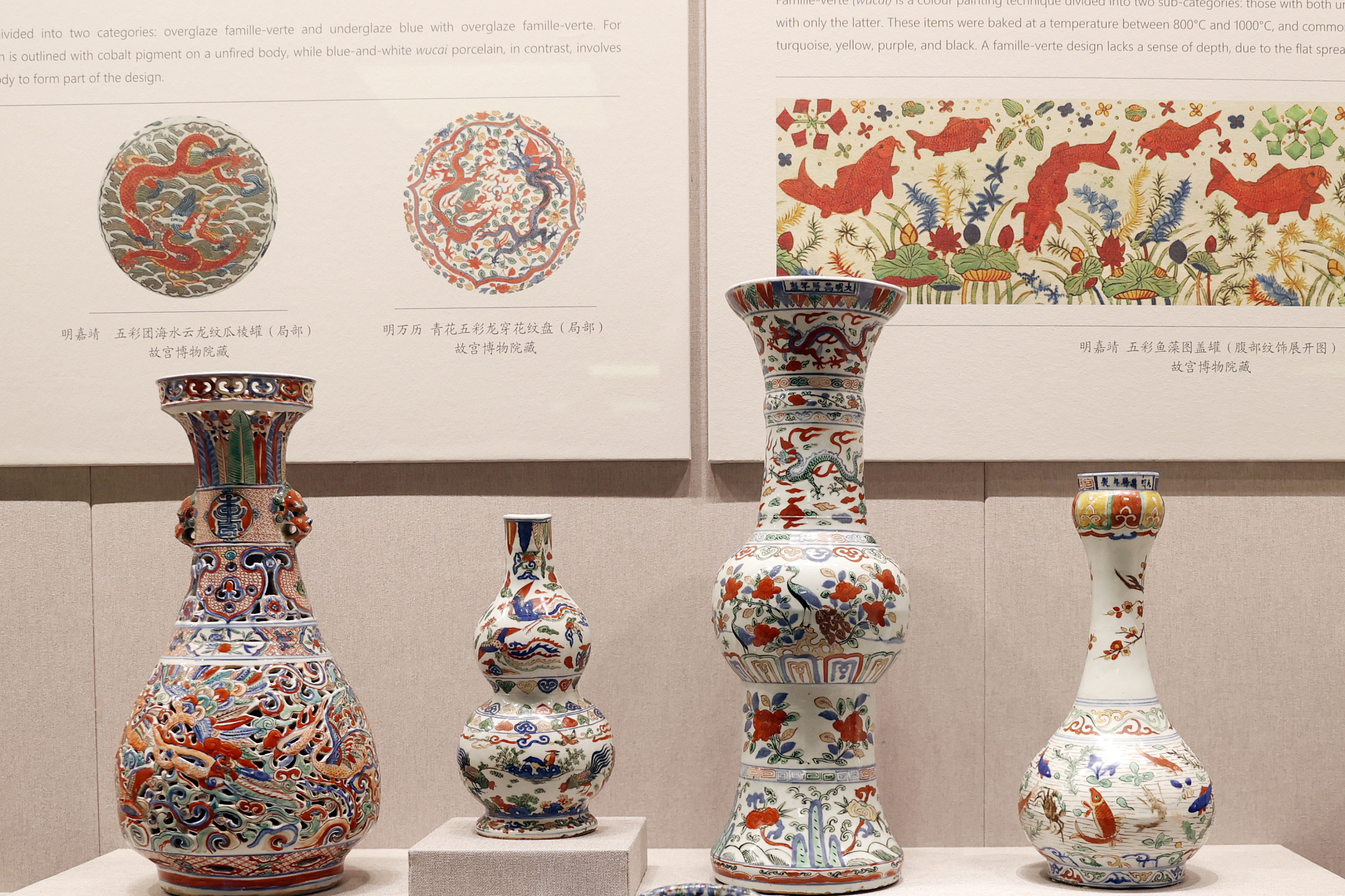
A collection of ceramic items from the Ming Dynasty (1368-1644), April 30, 2021. /CFP
A collection of ceramic items from the Ming Dynasty (1368-1644), April 30, 2021. /CFP
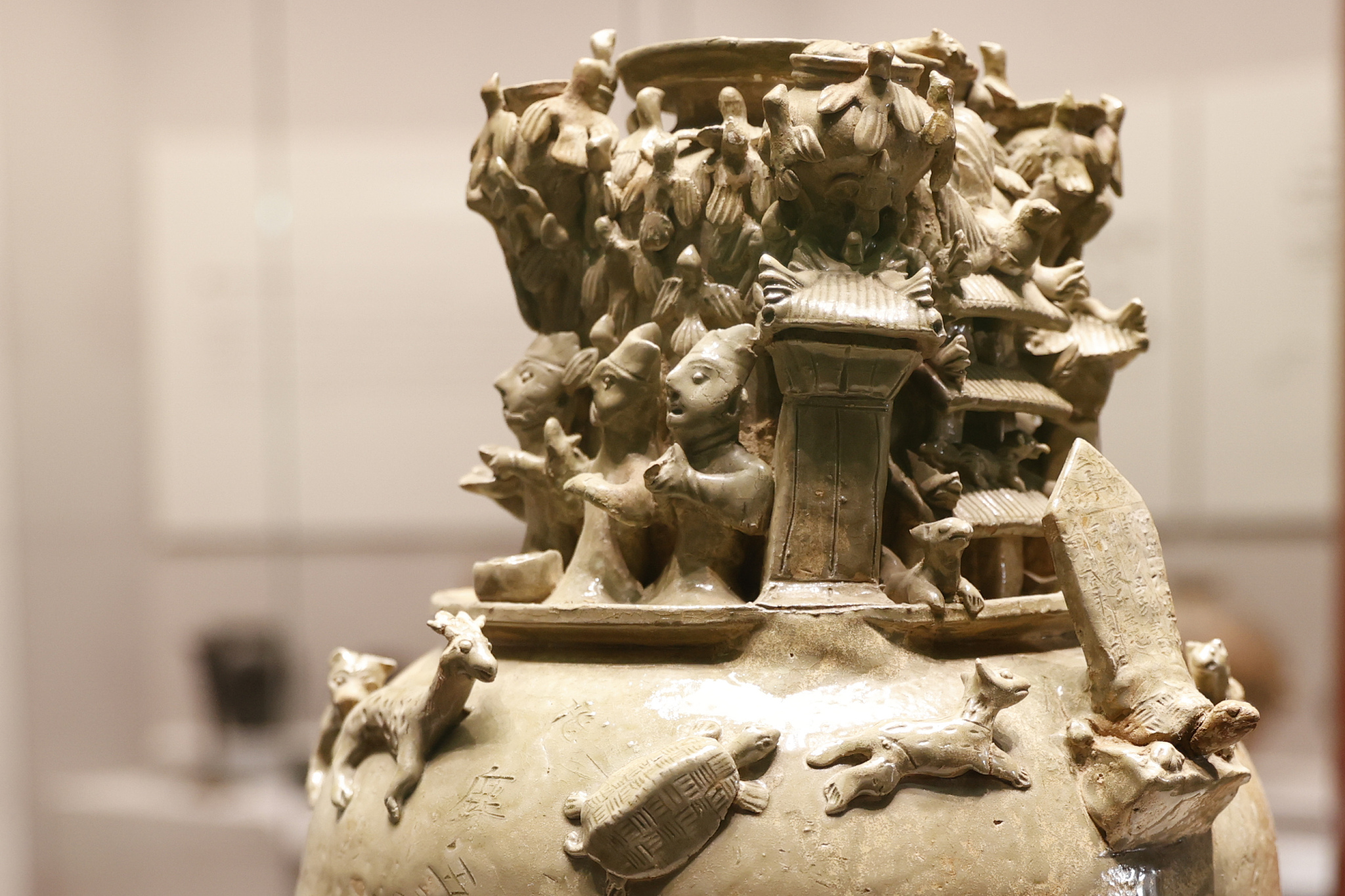
A ceramic jar with distinctive exterior designs, April 30, 2021. /CFP
A ceramic jar with distinctive exterior designs, April 30, 2021. /CFP
By scanning the QR code on each item's label, visitors are able to get more information about the artifact on their phones. Meanwhile, 20 items have been captured in digital form so that visitors can expand, rotate and scrutinize the treasures on special touch screens.
The Palace Museum had its first ceramics gallery in 1952, but it was moved around the palace compound in later decades. The Hall of Literary Brilliance, or Wenhua Dian, was the last ceramics gallery from 2008 to 2017, which exhibited about 400 artifacts.
(With input from agencies)

